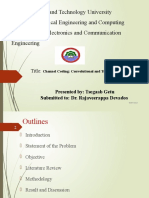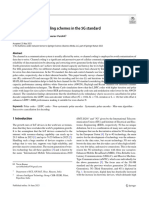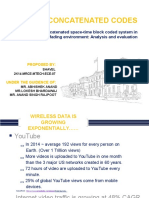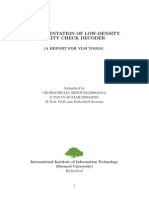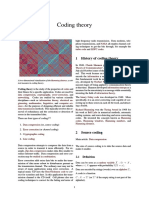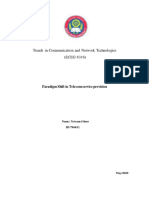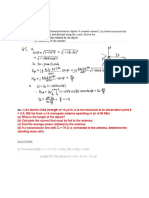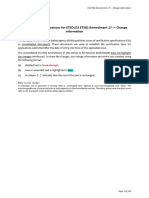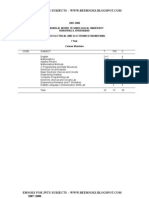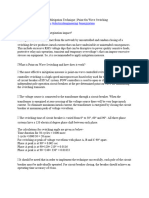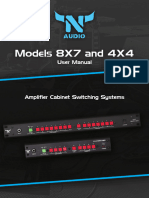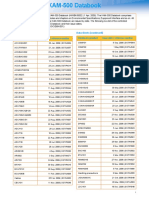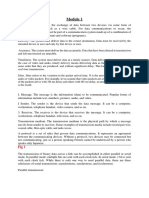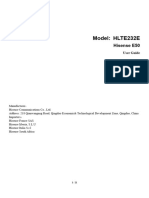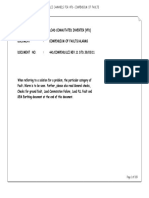0% found this document useful (0 votes)
101 views3 pagesChannel Codding Techniques
The document discusses different types of channel coding techniques used in wireless communications. It describes turbo codes, LDPC codes, and polar codes. For each type of code, it discusses their maturity, error correction capability, flexibility, computational complexity, interconnect complexity, throughput/latency capabilities, and synergies with 3G/4G standards. Turbo codes are proven in 3G/4G but less flexible. LDPC codes are selected for 5G but have higher interconnect complexity. Polar codes are selected for 5G control channels and offer lower complexity than other techniques.
Uploaded by
netsanetCopyright
© © All Rights Reserved
We take content rights seriously. If you suspect this is your content, claim it here.
Available Formats
Download as DOCX, PDF, TXT or read online on Scribd
0% found this document useful (0 votes)
101 views3 pagesChannel Codding Techniques
The document discusses different types of channel coding techniques used in wireless communications. It describes turbo codes, LDPC codes, and polar codes. For each type of code, it discusses their maturity, error correction capability, flexibility, computational complexity, interconnect complexity, throughput/latency capabilities, and synergies with 3G/4G standards. Turbo codes are proven in 3G/4G but less flexible. LDPC codes are selected for 5G but have higher interconnect complexity. Polar codes are selected for 5G control channels and offer lower complexity than other techniques.
Uploaded by
netsanetCopyright
© © All Rights Reserved
We take content rights seriously. If you suspect this is your content, claim it here.
Available Formats
Download as DOCX, PDF, TXT or read online on Scribd
/ 3



